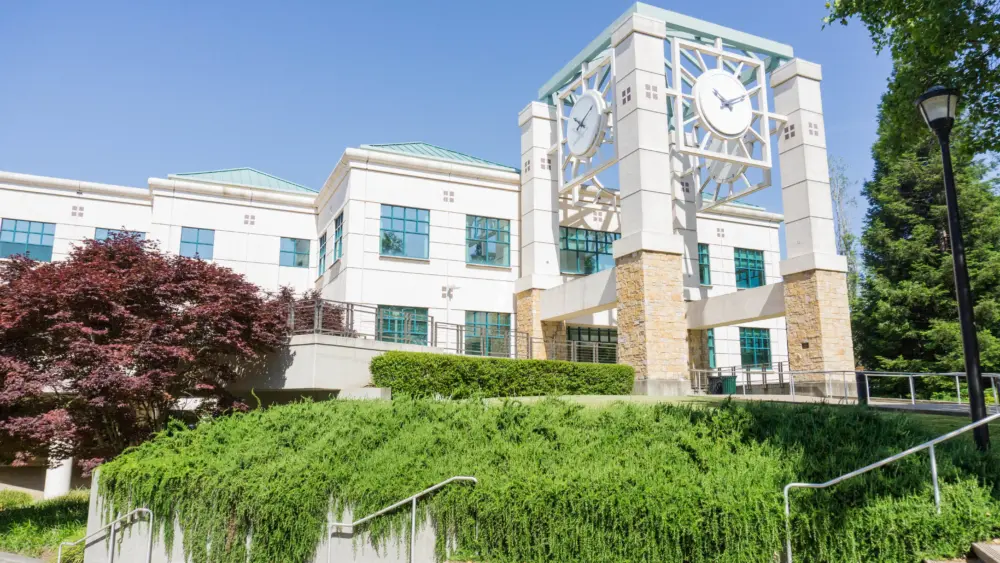
As the North Bay begins to emerge from the most destructive natural disaster in its history––the deadly October firestorms––rebuilding lives, homes and businesses is front and center.
It’s a staggering challenge, to say the least. On the personal level, many reckon with losses remembered on a daily basis. Something you see that you remember you had; and now don’t. A sock in the gut, but you move on.
When it comes to rebuilding homes and structures, those who lost their homes must negotiate a labyrinth––insurance reimbursements, floor plans, permits and so forth. Finally, after all the tedious work is completed and the details are in order, you’re faced with the ultimate reality: Who is going to build it?

“The construction industry in the North Bay has consistently had a worker shortage, but the fires have magnified it dramatically,” says Keith Woods, chief executive officer of the Santa Rosa-based North Coast Builders Exchange. But, it’s not just a North Bay problem, it’s also a statewide and nationwide problem, Woods says.
“Last year, the American Homebuilders Association surveyed its membership nationwide,” he adds. “And there was a chilling statistic. For every five construction workers retiring, only one construction worker was entering the trades. It set off all sorts of bells and whistles, and validated what we knew anecdotally.
” What happened? How did we get here? Woods and other North Bay construction experts point to a myriad of reasons, but three notions are roundly cited. First, a primary focus on academic achievement (versus hands-on trade work) in high schools nationwide. Second, the Great Recession. And third, a changing work ethic among younger people.
Academics vs trades
Woods was conversing with a local builder one day when a comment captured his attention. “Something he said opened my eyes. He told me that, in essence, we’ve lost two generations of construction workers. It started in the 1990s and lasted until the early 2000s with a big push in state funding for education with the idea that every child should go to college. This happened despite the fact that not everyone wanted to go to college or could afford to go to college––we were driving a worthy goal that, in short, was not in the slightest realistic.”
 College prep classes replaced vocational education courses. The standard 4.0 grade scale was expanded to 5.0. “High schools had college career counselors, advanced placement classes, and everyone was pushed at an early age to prepare for a university and there was the feeling that if they didn’t start in high school, they would not be successful in their career,” says Doug Hamilton, owner and president of Oak Grove Construction in Petaluma.
College prep classes replaced vocational education courses. The standard 4.0 grade scale was expanded to 5.0. “High schools had college career counselors, advanced placement classes, and everyone was pushed at an early age to prepare for a university and there was the feeling that if they didn’t start in high school, they would not be successful in their career,” says Doug Hamilton, owner and president of Oak Grove Construction in Petaluma.
Hamilton believes well-meaning parents helped tip the scale in discouraging their children from learning about the trades, citing himself as a case in point.
His father graduated with highest honors from Princeton. “Had I even considered going to the JC, I would have been thrown out of the house,” he laughs.
Hamilton notes that in the ’70s and before, trade workers were respected and jobs like mechanic or electrician were considered to be a good middle-class career path. Vocational/technical classes flourished until the mid-90s, when high schools pulled their shop programs, says Eric Wade, professor and coordinator of the welding program at Napa Valley College. “It was ‘no teacher left standing.’ It didn’t work and it still doesn’t work.” And while many people are quick to blame schools for “gutting” funding to vocational/technical classes, Hamilton says the real reason they disappeared was because of parents “[they] were not letting their children sign up for them.”
To encourage high school and college students to take a look at trade careers, several local programs have been launched, including the North Bay Construction Corps––a joint project of the North Coast Builders Exchange, the Career Technical Education Foundation and the Sonoma County Office of Education. There’s also 180 Studios, a nonprofit managed by Cornerstone Properties of Petaluma, which offers public access to professional equipment––welding, woodworking, fabrications, a machine shop, electronics and robots, plus a fiber arts studio (coming soon)––so that multiple generations can teach, learn and practice industrial and creative arts, engineering and design. Napa Valley College offers a welding program, which is already at capacity. And to manage it all, Sonoma State University has a construction management certificate program.
Recession––and rebound
A second reason experts believe we’re in a critical workforce shortage today is the recession, which started in 2007 and officially ended in 2009, though the North Bay suffered residual effects, particularly in the housing market, until about five years ago.
 “We’ve had five years of real estate recovery, so the demand has been coming back for trade workers, and most of the supply has already been sucked up,” explains Robert Eyler, dean of Extended and International Education at Sonoma State University (SSU). “The fires have led to a new increase in demand not there previously. If the fires had happened six years ago, the labor would be more available to reconstruct Santa Rosa and Napa.”
“We’ve had five years of real estate recovery, so the demand has been coming back for trade workers, and most of the supply has already been sucked up,” explains Robert Eyler, dean of Extended and International Education at Sonoma State University (SSU). “The fires have led to a new increase in demand not there previously. If the fires had happened six years ago, the labor would be more available to reconstruct Santa Rosa and Napa.”
“The recession devastated the construction market,” says Woods. “As in much of the U.S., the North Bay experienced close to a 50 percent drop in construction payroll from 2005 to 2010.”
Hamilton recalls driving through North Bay subdivisions in the ’80s and ’90s. “You would see trucks of construction workers. The fabric of Sonoma County was the trades. The owners [of the construction companies] perhaps lived in Fountaingrove, but all the workers lived in the subdivisions. There was a real sense of community. Then the recession hit and no one was building. So, all the trade workers went to Reno or San Francisco to chase where they could get work. There was a great exodus of talent. Add that to the maturation of talent (retiring) and the absence of inflow by deliberately discouraging youth from pursuing the trades, and you’ve got a problem.”
Or, as Woods says, “It’s not only a problem, it’s a crisis.”
Bryan Varner, coordinator for SSU’s construction management certificate program, also says the Great Recession played a major role in today’s shortage.
“The recession drained construction workers and even construction company owners,” he says. “Many lost their businesses and had to find something new, so let’s say they went into catering and now they have a restaurant. In other words, they transitioned to other careers, settled in and they’re not coming back to construction.”
There is one bright spot, however. Varner says that since the recovery started, SSU has enjoyed an uptick in the number of those enrolling in the construction management certificate program.
Changing work ethic
Call it the final evolution of Maynard G. Krebs––TV’s first and most famous beatnik on “The Many Loves of Dobie Gillis,” way back in the late ’50s, early ’60s.
When confronted with the possibility of having to work, Maynard (portrayed by Bob Denver) would yelp, jump and utter his most famous quote: “Work?!”
“Not everyone can go into the trades,” says Eyler.
There’s a lot of labor involved, whether in construction, manufacturing or farming, and many people don’t have the physical wherewithal or stamina to simply do it. Some try and fail and some don’t even try, according to the experts.
“Many students today have little real-world experience in anything,” says Wade, who notes that he’s had to teach some of his welding students how to work. “They have no idea how to physically manage themselves in a shop environment,” he explains. “They can ride a skateboard really good, but in here (the shop), skills have to be practiced and most kids today don’t have the old-fashioned stick-to-itiveness to figure things out, so they become frustrated. If there’s no immediate gratification, many of them want nothing to do with it.”
Wade engages his students with what he calls “kind cruelty.” He never belittles them, but shows them what to do, helps them do it with supervision, then employs less supervision until they’re able to do it themselves. With some, it works. With others, not so much. “Many kids today have a YouTube mentality. They think if they watch four videos, they’re an expert. We teach them how to practice to develop the skill. It doesn’t move over by osmosis.”
Hamilton works hands-on with high school students in the North Bay Construction Corps program and has also volunteered with the national Choices Program. “[The Choices program] which gets people like me into the high school to discuss choices kids make that will impact their income, health and happiness,” he explains.
In more than 100 high school freshman classroom appearances, Hamilton asks the same questions.
“I ask how many have a cell phone. A maximum of three in each class don’t (of approximately 30 students). Then I ask those who have a cell phone if they pay the bill. Again, a maximum of three pay the bill (for their phone). And finally, I ask how many have part-time jobs. The average is one or two students. It’s a real generational change––what we, as parents, provide and what we, as parents expect. And, it has a lot to do with the shift (in work attitudes),” Hamilton says. “When I was in high school, more than half of the students were working, whether at the ice cream shop, babysitting or mowing lawns. Now, high school kids expect to be given a car to drive to and from school.”
Woods adds that advances in technology and having information at one’s fingertips has led a lot of young people to think their future “is best served in the high-tech world, as video game designers and programmers. They see fame and fortune in tech,” Woods says, not trades. And the work is considerably easier.
Hamilton believes this generation of parents (himself included) has given our children an undue sense of entitlement, and it has been a horrible disservice to them. “College loans will catch up, they will have their own bills to pay and we’ve shielded them from life’s realities for way too long,” he says. And while he finds the personal computer, cell phone and social media to be wonderful in the progression of business, he says, “In social interaction, it’s been a disaster. Kids break up and ask people out on dates via texting. We’re not seeing as much volunteerism. Kids often ask, ‘What’s in it for me?’ whereas in my father’s generation, you volunteered or you were not considered a valuable employee (or candidate).”
He explains that kids today too often don’t deal with fresh air, personal or social challenges, and the skill set associated with that is greatly diminished, impacting their ability to perform in the workplace. “They want to work from home and earn $70,000 a year right out of college, with no prior work experience,” he says. “We need to teach them to come to work early, stay late and invest in their own future.”
Some exceptions? Hamilton’s example: young people raised on ranches or in agriculture.
“My ideal applicant, in my business, is the kid who worked on a ranch with his or her Dad. Because coming to work for me is easier than working on the ranch with Dad,” Hamilton laughs.
The way forward
The fires were brutal. A region already strapped for affordable housing before the first house burned now finds itself in a recovery/rebuilding phase that will stretch over the next five-to-seven years, according to the experts.
“We’re entering the largest building or rebuilding project in North Bay’s history,” says Woods. “And there is no playbook or template for how we recover.”
But Hamilton believes the best is yet to come.
“My confidence is that this event [the North Bay fires] will unify this community in ways not seen since the 1950s. The attractiveness of living here remains. The fires put light on the shortage of cost-available housing. I see us making the move for a better balance between the environment and human success,” he says.
“We can’t have all doctors and high tech. We have got to have a middle class to support us. I am bullish on Sonoma County, but it won’t be a quick turnaround. We will not go backward. Our sense of community will propel us through the process and we will be better off because of it.”
North Bay Construction Corps
Now in its second year, the North Bay Construction Corps (NBCC) is a collaborative project of the Career Technical Education (CTEF) Foundation of Sonoma County, the North Coast Builders Exchange and the Sonoma County Office of Education.
Some 37 final-semester high school seniors are enrolled currently, meeting on Monday or Tuesday nights (weekly) and one Saturday a month. One group is at Rancho Cotati High School in Rohnert Park and the other meets at Healdsburg High School, but the students are from all over the county.
 The program is funded and taught by the construction industry, according to Robin Bartholow, director of workforce development for NCBE.
The program is funded and taught by the construction industry, according to Robin Bartholow, director of workforce development for NCBE.
“Students who want to participate fill out an application, get letters of recommendation and go through an interview process with contractor and other industry leaders,” Bartholow explains. “We want to get to know them and we want to let them know what the program entails. They have to show us they want to do it and need to understand that it’s a pretty big commitment. Some cannot commit because of sports or other activities. Once the program begins, if they miss a number of classes, we ask them to leave the program because we want to be able to recommend these students to industry people looking to hire them at the end of the program.”
The weekly sessions cover just about everything related to construction––plumbing, electrical, HVAC, landscaping––you name it. Experts cover contracting, construction math and other subjects. Students learn how to use power and hand tools, get certified in CPR, first aid, forklift operation and other skills of the trades. At the end, there is a two-week boot camp where they apply their skills on a real construction project. Last summer, they worked with Habitat for Humanity to construct a deck and replace rotting siding for an elderly couple.
Last year the program was all young men, but this year, three young women have come on board.
“We’re very happy about this because one of our goals is to educate young women on the multitude of career choices in this industry,” says Bartholow. “The workforce shortage is at crisis levels, and we need everyone who has an interest in construction, even if it isn’t what they want to do for the rest of their lives.”
The program leads to “a remarkable transformation of young people,” Bartholow says. “They learn that in this industry, to excel, they have to commit to get to the job site early, work hard, and leave it clean and safe for the next day. By the time they graduate, if they didn’t have it before, they all have developed a good work ethic.” An additional bonus is that hey earn credit at the SRJC. “We welcome industry folks who want to get into the classroom to help teach these students about their trade to contact us at NCBE.”
For more information, visit www.ncbeonline.com
Napa Valley College Welding Program
Napa Valley College’s (NVC) welding program is intense and at full capacity. Students work from 7 a.m. to 4 p.m. four days a week for 36 weeks to learn everything about welding. They’re rewarded with a certificate––and usually, at the end, a job is waiting.
Eric Wade is the professor of welding and coordinator of the welding program. He has owned his own welding business since 1977, and if he’s not in the classroom, he’s on the job as a rig welder.
NVC’s day welding classes attract a broad spectrum. Some are right out of high school, some are in their early 20s and the rest reflect the normal junior college demographics––anywhere from 25 to 40 and up.
Wade describes the classes as rigorous. “We have industry standards we have to adhere to, and we hold them (the students) to it. We don’t dumb it down and we don’t allow any effort less than what it is to accomplish the task. We are firm and consistent, which really bothers students who don’t like adults who are consistent,” Wade laughs.
Wade is fiercely proud of his program and enjoys working with the students. “The industry needs people to work together to problem solve,” Wade says. “Here, the environment is such that we teach each other, but still have healthy competition. The accomplished students help others, plus everyone has to share tools. Skill attainment is extremely high. By the end, we have qualified just about everyone in one type of procedure––pipe welding, open groove plate welding and fillet welds. Our goal is to get everyone qualified in all positions (flat, horizontal, vertical, overhead, etc.).”
In addition to the day classes, NVC also offers welding classes two nights a week at both its Napa and St. Helena campuses (for hobbyists and persons employed by light industries). Starting next semester, it will also open a night certificate program for working individuals seeking certificates in specific skill sets.
SSU Construction Management Certificate Program
 Launched in the 1980s, Sonoma State University’s Construction Management Certificate Program was created to offer a forum and resource for North Bay students interested in the field. According to Bryan Varner, a construction law specialist and the program coordinator, there is no university in the area that has a construction management degree.
Launched in the 1980s, Sonoma State University’s Construction Management Certificate Program was created to offer a forum and resource for North Bay students interested in the field. According to Bryan Varner, a construction law specialist and the program coordinator, there is no university in the area that has a construction management degree.
“You have to move to get a bachelor’s degree in construction management,” he explains.
SSU’s main audience is licensed contractors and mid-to-high-level construction management employees. “We also get a fair amount of people who are currently in the trades, such as carpenters and roofers––who are interested in moving up the ladder and getting a body of knowledge to allow them to qualify for higher-level jobs. The people who want to get off their knees and use their brains more than their bodies,” he explains.
The certification requires 240 classroom hours––eight 30-hour courses, spread over 10 weeks, three nights a week. The course is pass/no pass.
“People work during the day, so we’re teaching at night,” Varner says. The demographics include business owners and partners, mom and pop companies, spouses, mid-and high-level managers, tradespeople and individuals transitioning from other careers. Most are from Sonoma County, but some are also from Napa, Mendocino, Main and Solano counties.
The classes are taught by veteran practitioners of the trade, all with a passion for teaching, Varner says. “They know their stuff and like sharing what they know to help people learn and grow. The instructors get more satisfaction from sharing than they do from the paycheck. They are working-world pros. It’s a unique match that brings us together in a learning environment that helps improve our industry.”
The growing economy post-recession has boosted enrollment in the program, but Varner is not certain how the recent fires will impact the program. He believes the economy and market post-fires is an opportunity, but also a risk.
“It’s hard to find competent, reliable contractors, and especially the labor. The workforce shortage has been magnified and accentuated greatly. There will be increased interest in these programs because people know how busy they’re going to be and they finally realize what they don’t know and what they need to learn so they don’t make mistakes––or at least not as many.”




